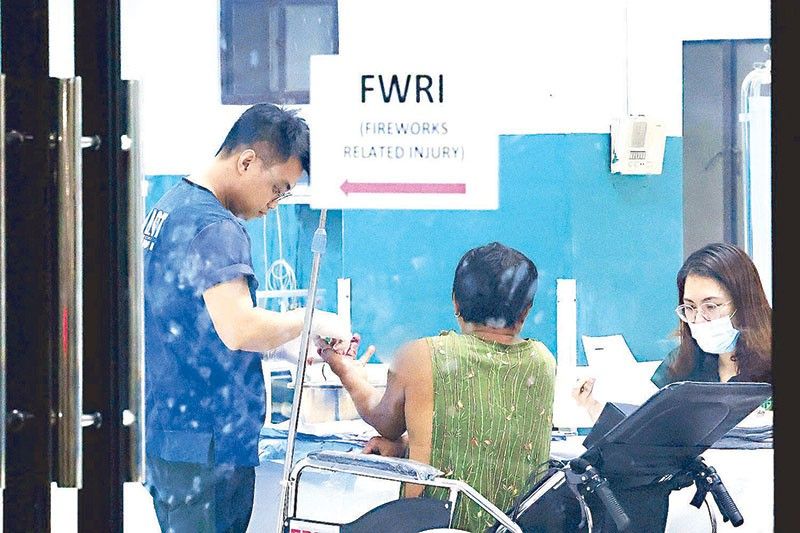New Year revelry leaves significant rise in injuries

MANILA, Philippines — The Philippine National Police (PNP) has reported a significant increase in the number of firecracker-related incidents during the New Year’s Eve celebration.
Col. Jean Fajardo, PNP public information chief, said in a phone interview with reporters yesterday that a total of 509 cases were reported on the first day of 2024.
“This number is expected to rise as additional reports from hospitals are processed,” Fajardo said in Filipino.
The PNP report is higher than the 231 cases of fireworks-related injuries (FWRI) reported by the Department of Health as of 5:59 a.m. yesterday, although Health Secretary Ted Herbosa said the DOH figure might also go up.
“It is possible that the number of (FWRI) cases would still go up since there could be a delay in reporting from some of our sentinel sites and hospitals. But I can tell you, the number is higher than last year,” Herbosa said in an online briefing yesterday morning.
He also said that the 231 cases included the youngest, an 11-month-old boy, and the oldest, a 76-year-old man.
“It is the first New Year without any restrictions on movement due to the pandemic, wherein only community fireworks displays were allowed. This time, people started using firecrackers again. So the cases went up,” Herbosa pointed out.
Ninety-three percent of the new cases occurred at home and in the streets, with seven out of 10 or 71 percent of the injured being males.
The National Capital Region reported the most number of cases, followed by Central Luzon with 27 cases and the Ilocos Region with 24.
The regions with the lowest number of cases are Davao Region and Mimaropa with one case each; Northern Mindanao, Central Visayas and the Cordillera Autonomous Region with three cases each.
The Bureau of Fire Protection also reported yesterday that it recorded zero firecracker-related fires from Dec. 24 to 31 last year.
Fire Superintendent Annalee Carbajal-Atienza, BFP spokesperson, attributed the zero cases to the information campaign the bureau launched to prevent an incident and the visibility of firetrucks in many areas in Metro Manila.
Thermal inversion
Meanwhile, the Philippine Atmospheric, Geophysical and Astronomical Services Administration (PAGASA) reported that the fireworks during the New Year’s celebration caused thermal inversion, with smog enveloping Metro Manila skies.
PAGASA Weather Specialist Rhea Torres said in a radio interview that the pollutants from firecrackers accumulated during that time, causing reduced visibility in Metro Manila and nearby provinces.
“We examined our data and we saw that we experienced thermal inversion. These are the smokes from the firecrackers and accumulated below, resulting in reduced visibility compared to the normal days. The thermal inversion will disperse once the hot wind will go up and the pollutants from the firecrackers will be dispersed,” Torres said.
She advised those with respiratory problems to wear masks amid the threat of the pollutants from the thermal inversion. “It is harmful especially to those with respiratory problems like asthma, so as much as possible if you will go out, it is better to wear a mask.”
Torres explained thermal inversion was different from the volcanic smog from the Taal Volcano.
“The volcanic smog was caused by the sulfur dioxide from the volcano while the thermal inversion was caused mostly by pollutants or particulates in the atmosphere that cannot go up. The pollutants are trapped because of the cold wind above the land,” Torres added. Smog was experienced in Metro Manila on Sept. 22, 2023 due to excessive emission of heavy traffic, especially during rush hour.
The Department of Environment and Natural Resources has set the normal air quality at 35 micrograms per normal cubic meter. — Rhodina Villanueva, Bella Cariaso, Mark Ernest Villeza, Ric Sapnu, Roel Pareño, Ed Amoroso
- Latest
- Trending
























